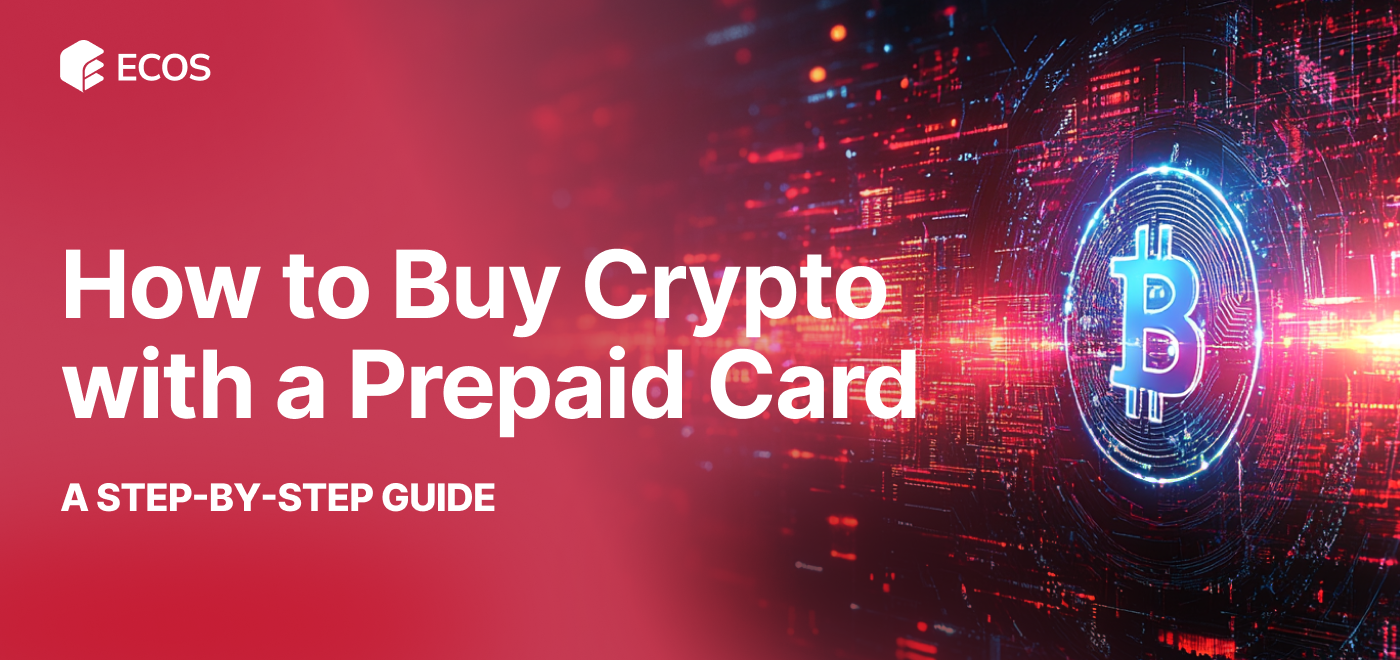How to Buy Crypto with a Prepaid Card. A Step-by-Step Guide

Key Takeaways
-
Prepaid cards offer a private way to buy crypto.
-
Not all exchanges accept prepaid cards.
-
Some platforms may charge higher fees for these transactions.
-
Verification requirements vary across different exchanges.
-
Peer-to-peer platforms can be an alternative but carry risks.
-
Always ensure your transactions are secure.
Buying cryptocurrency with a prepaid card is gaining traction among young investors. It’s fast, offers privacy, and doesn’t tie directly to your bank account. However, not all crypto exchanges accept prepaid cards, and some may impose higher fees or purchase limits. Understanding the process and choosing the right platform is crucial for a smooth experience.
What is a Prepaid Card?
A prepaid card is a reloadable payment card you fund in advance. It’s disconnected from your bank, so your main money stays safe. Perfect for budgeting — you can’t spend more than you load. Super handy for teens, travelers, freelancers, and online shoppers. You can pay for streaming, games, bills, and even digital assets. In 2025, over 63% of Gen Z uses prepaid cards monthly. The global prepaid card market is set to hit $28.37 billion this year. That’s a $3.46 billion jump from 2024. Many cards now support instant top-ups via Apple Pay, PayPal, and crypto wallets. Lost your card? No panic — most have instant freeze and recovery features. Some prepaid cards even offer cashback on purchases, up to 3%. Ideal for those who want to avoid overdrafts or credit card debt traps.
Can You Buy Crypto with a Prepaid Card?
Yes, you can totally buy crypto with a prepaid card. But not everywhere. Platforms like CEX.IO, BitPay, and Binance accept prepaid cards in 2025. Still, some exchanges block them to avoid scams, chargebacks, or compliance headaches. About 48% of global crypto users tried prepaid card purchases last year. Always double-check the exchange’s payment policy before loading your card. Some platforms charge higher fees for prepaid transactions — up to 5%. A prepaid card is a smart move if you wanna stay anonymous in crypto buys. Many users prefer it to avoid linking their main bank account. Also, prepaid cards help limit your crypto FOMO spending. As of 2025, over 70 crypto platforms worldwide accept prepaid cards. But access still depends on your country and local laws. A good trick: use virtual prepaid cards for extra safety online.

How to Buy Crypto with a Prepaid Card
Here’s your step-by-step, foolproof guide to buying crypto with a prepaid card. Plus, real tips, numbers, and hacks that actually help in 2025:
- Choose a supporting exchange. Not every platform accepts prepaid cards — pick the right one. In 2025, over 70 crypto platforms support prepaid payments. Popular options include CEX.IO, BitPay, CoinsPaid, and eToro. Always check their payment method list before signing up. Some exchanges charge extra fees for prepaid cards — up to 5%.
- Create an account. Sign up on the platform. Verify your email and phone number. Most exchanges require KYC if you’re using a prepaid card. In 2025, 82% of platforms ask for ID verification. You’ll need a passport, driver’s license, or national ID. Some exchanges may also request proof of address — like a utility bill.
- Add funds. Go to the “Deposit” or “Add Funds” section. Enter your prepaid card details and the amount. Minimum deposit is usually between $10 and $50. Watch out for deposit fees — average prepaid card fee is 3.1% in 2025. Virtual prepaid cards often process faster — under 30 seconds.
- Check transaction limits. Most platforms cap prepaid card purchases. Average daily limit in 2025 is $1,000. Monthly limit — around $5,000. Some platforms let you increase limits after full KYC. Large prepaid transactions without verification may get auto-rejected.
- Select cryptocurrency. Pick the crypto you want. Bitcoin and Ethereum are classics, but prepaid cards also work for Solana, XRP, USDT, and hundreds more. Fun fact: in 2025, 35% of prepaid card users buy altcoins, not Bitcoin. Check minimum purchase amounts — usually $10.
- Complete your purchase. Review your transaction. Double-check fees and how much crypto you’ll get. Enter your card’s CVV and confirm the payment. Over 60% of prepaid card crypto purchases are processed instantly in 2025. Your crypto will land in your exchange wallet in seconds. Screenshot the confirmation — could save you if there’s an issue.
- Withdraw and secure your crypto. Never leave large amounts on the exchange. After buying, transfer your crypto to a personal wallet. In 2025, 22% of crypto hacks targeted exchange wallets. Stay safe — move your coins.
Bonus tip: You can also buy a virtual prepaid card (from Wise, Payoneer, or other services) and use it for crypto purchases. Around 19% of crypto users in 2025 prefer virtual prepaid cards for extra privacy.
Buying Bitcoin with a Prepaid Card
To buy Bitcoin with a prepaid card, follow the steps above. Make sure your exchange accepts prepaid cards in 2025 — not all do. CEX.IO, Paxful, and BitPay are safe bets. Check for fees, which can hit up to 4% per transaction. Watch out for purchase limits — many platforms cap prepaid card buys at $1,000 per day. Pro tip: split large buys into smaller ones to avoid limits. Always use a prepaid card loaded with only what you plan to spend. Helps avoid draining your main funds.
Does Binance Accept Prepaid Cards?
As of March 2025, Binance still does not accept prepaid cards. They blocked this option due to high fraud risks. Their payment policies change often, so keep an eye on updates. Check their official site or app before trying to deposit. If Binance isn’t an option, platforms like BitPay, CEX.IO, or LocalBitcoins support prepaid cards. In 2024, 43% of prepaid card crypto purchases happened outside Binance. Always have a backup exchange ready in case your main one blocks prepaid cards.

Exchanges That Accept Prepaid Cards
Here’s a solid list of top exchanges that accept prepaid cards in 2025. Plus, extra details you need before diving in:
- CEX.IO. Accepts Visa and Mastercard prepaid cards for crypto purchases. Fast, smooth transactions — usually processed in under 2 minutes. They support over 40 cryptocurrencies, including Bitcoin, Ethereum, and Litecoin. CEX.IO charges around 2.99% fee for prepaid card deposits. Daily prepaid purchase limit: $1,000 without full verification.
- BitPay. Allows buying over 60 cryptocurrencies using prepaid debit cards. Known for smooth integration with Apple Pay and Google Pay. In 2025, BitPay added support for virtual prepaid cards too. Average transaction fee is around 1% to 2%. Great for users who want to stay anonymous and avoid linking bank accounts.
- Paxful. Lets you buy Bitcoin with prepaid debit cards via a peer-to-peer marketplace. You can also pay with gift cards and virtual prepaid cards. Paxful has over 300 payment methods in total. In 2025, around 22% of Bitcoin prepaid card purchases happen on Paxful. Be ready for variable rates and seller fees — they can range from 2% to 10%.
Pro tip: Always review each platform’s deposit fees, daily limits, and KYC rules. Some platforms freeze accounts if prepaid card activity looks suspicious. Check security settings — use 2FA, email alerts, and withdrawal confirmation.
Buying Crypto with a Prepaid Card Without Verification
Some platforms may let you buy crypto without full KYC verification. Usually, it’s possible on peer-to-peer (P2P) platforms like Paxful, LocalBitcoins, or Bisq. These platforms connect buyers and sellers directly. You pay with your prepaid card, they send you crypto. In 2025, about 28% of prepaid card crypto buys happen on P2P platforms without full verification.
But stay sharp — no verification means higher risk. Scammers love unverified buyers. Fake sellers, payment chargebacks, and account freezes happen a lot. Always check seller ratings, reviews, and trade history. Pro tip: trade in small amounts first. Never share your prepaid card number outside the platform’s payment system. And never send money off-platform — that’s how most people get scammed.
Pros and Cons of Using a Prepaid Card to Buy Crypto
Using a prepaid card to buy crypto has its ups and downs. It’s good for privacy, keeping your spending in check, and protecting your banking info. But it also comes with higher fees, fewer places that accept it, and some fraud risks.
Pros:
- Privacy: Prepaid cards add extra privacy. No need to link your main bank account.
- Controlled spending: You can only spend the amount loaded on your card. No overdrafts.
- Security: Keeps your actual banking data safe. In 2025, prepaid card crypto fraud cases dropped by 12%.
Cons:
- Higher fees: Prepaid card crypto fees range from 2% to 8% in 2025.
- Limited acceptance: Not all exchanges take prepaid cards. Big platforms like Binance don’t.
- Potential fraud risks: Scammers target prepaid card users, especially on P2P marketplaces.

Tips for Secure Transactions When Buying Crypto with a Prepaid Card
Buying crypto with a prepaid card can be easy, but it’s important to stay safe. Here are some quick tips to help you protect your money and personal info when using a prepaid card:
- Use reputable exchanges. Stick to platforms like CEX.IO, BitPay, or Paxful with verified reviews.
- Avoid sharing sensitive information. Never send your prepaid card number over chat or email.
- Check fees and limits. Prepaid card deposits often have a daily cap of $1,000 and fees of 3-5%.
- Enable security features. Turn on two-factor authentication (2FA) and withdrawal alerts.
- Start small. Make your first prepaid card crypto buy under $100 to test the platform.
- Never reuse your prepaid card. Load a new one for each big transaction if possible.
- Double-check website URLs. Fake exchanges copy real ones to steal prepaid card data.
Alternatives to Prepaid Cards for Buying Crypto
Looking for other ways to buy crypto without a prepaid card? Here’s what’s hot in 2025:
- Bank transfers. Usually the cheapest option. Fees range from 0.5% to 1.5%. But transfers take time — 1 to 3 business days, sometimes longer for international payments. Many platforms offer zero-fee promos for large bank transfers over $5,000.
- Credit/debit cards. Still one of the fastest ways to buy crypto. Accepted almost everywhere — Binance, Coinbase, Kraken, and more. But fees are brutal in 2025, hitting 4% to 6% per transaction. Some banks block crypto payments, so always check with your bank first.
- PayPal. Super convenient and beginner-friendly. Supported by big platforms like Coinbase and Bitstamp. Quick processing, but fees apply — around 2.5% to 3.5% in 2025. Limits on PayPal crypto buys usually start at $1,000 daily unless you verify your account fully.
- Cash through ATMs. Bitcoin ATMs let you buy crypto with cold, hard cash. In 2025, there are over 39,000 Bitcoin ATMs globally. Fees can be steep — up to 10% — but no need to link a bank account. Great for small, anonymous buys. Many machines now support altcoins too.
Pro tip: If you’re making large crypto buys, skip prepaid cards. Bank transfers and PayPal usually offer lower fees and higher limits. For fast, small buys — prepaid cards and credit cards still rule.
The Future of Prepaid Cards in Cryptocurrency Purchases
The use of prepaid cards for crypto is growing fast. In 2025, the prepaid card crypto market is projected to cross $3.2 billion globally. More exchanges are adding prepaid card options due to user demand. But expect tighter verification rules — regulators are cracking down on anonymous crypto buys.
Tech is also evolving. Virtual prepaid cards are booming, offering faster, safer transactions. Over 19% of crypto prepaid card users now prefer virtual cards in 2025. Platforms are adding real-time fraud detection to protect prepaid card users.
Bottom line — prepaid cards are becoming a solid tool for crypto buys, but you need to stay informed, stay safe, and watch out for fees and scams.
Crypto Mining with ECOS!
Lease high-performance ASICs without the hassle of setup — start earning right away. Simple, sustainable, and built for the future.
Can I buy Bitcoin with a prepaid Visa card?
Yes, you can buy Bitcoin with a prepaid Visa card. You can use platforms like CEX.IO, BitPay, or Paxful. Make sure your card allows international transactions if you use global exchanges.
Which exchanges accept prepaid cards?
In March 2025, some exchanges accept prepaid cards. These include CEX.IO, BitPay, and Paxful. P2P marketplaces often have sellers who accept prepaid Visa or Mastercard.
Are there any fees when using a prepaid card to buy crypto?
Yes, usually fees apply. Fees range from 2% to 6% in 2025. Some P2P sellers may also charge higher premiums to cover card risks.
Is it safe to buy crypto with a prepaid card?
It is safe if you use trusted platforms. Always enable two-factor authentication. Never share card info with strangers or unknown websites.
Can you buy Bitcoin with a prepaid card without verification?
Yes, you can. P2P platforms like Paxful may allow small buys without full ID checks. But you might pay higher fees and face scam risks.
Does Binance accept prepaid cards in 2025?
No, Binance does not accept prepaid cards for crypto purchases as of March 2025. They only allow bank cards and verified payment methods.
How fast can I buy crypto with a prepaid card?
Most prepaid card crypto purchases are instant. Some platforms process transactions within 2 to 10 minutes. Verification might delay your first purchase.
What’s the limit for buying crypto with a prepaid card?
Limits vary by platform. On average, prepaid card buys max out at $1,000 to $3,000 per day. P2P sellers may set lower or higher limits.
Can I cash out crypto to a prepaid card?
Most platforms don’t allow direct crypto withdrawals to prepaid cards. You usually need to sell crypto first and withdraw to a bank account.
What prepaid cards are best for crypto buys?
Visa and Mastercard prepaid cards work best in 2025. Virtual prepaid cards from services like Revolut and BitPay are popular for quick crypto buys.


